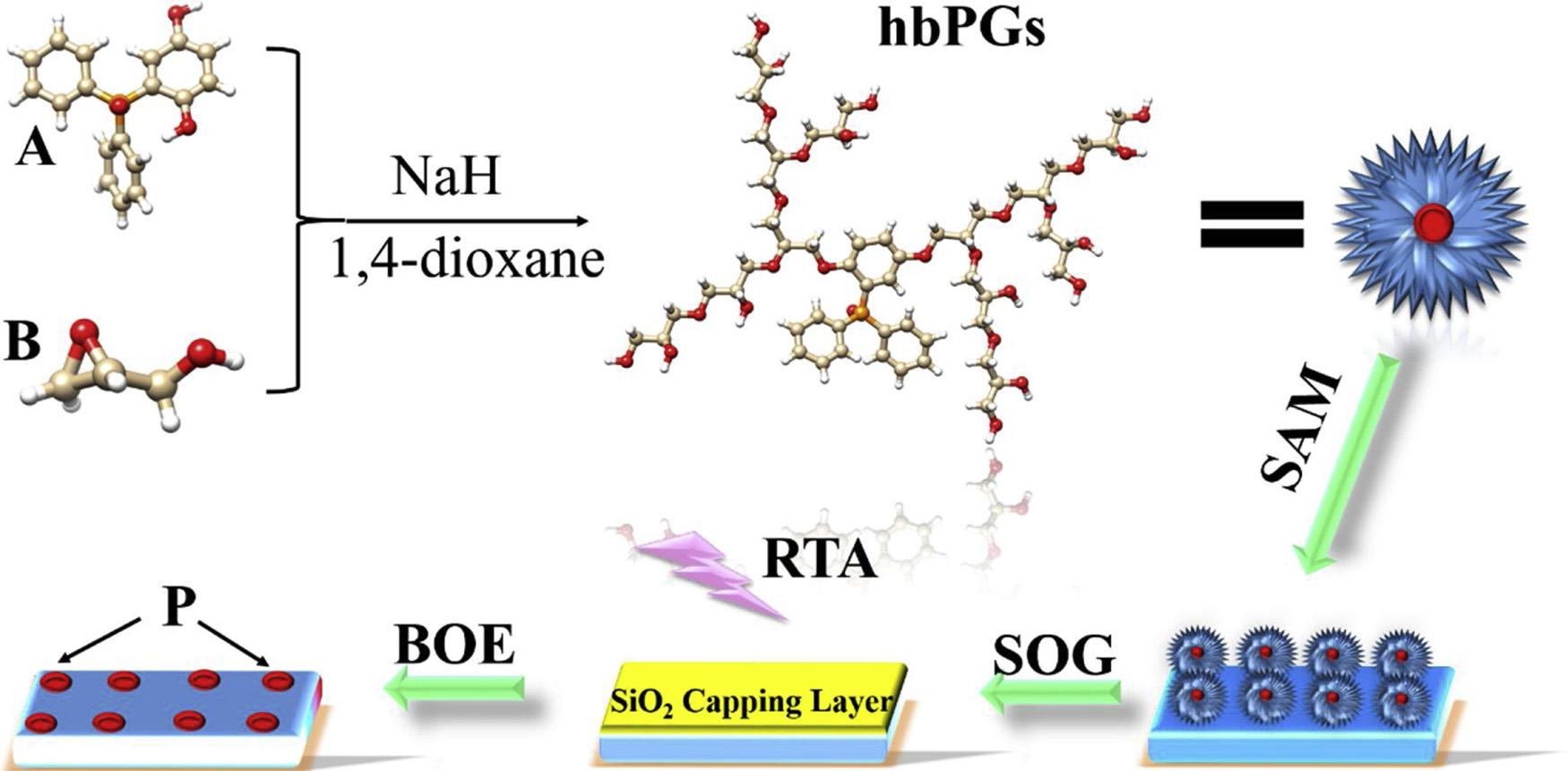Abstract
The self-assembly of macromolecules with each carrying one phosphorus atom may allow us to manipulate individual dopants at large scale. In this work, we applied the ring-opening multibranching polymerization process to synthesize hyperbranched polyglycerols (hbPGs). Nuclear magnetic resonance (NMR), inductively coupled plasma-atomic emission spectroscopy (ICP-AES) and size exclusion chromatography with multi-angle light scattering (SEC/MALLS) are employed to characterize the hbPGs molecules. The results indicate that each hbPGs molecule carries only one phosphorus atom. To drive the dopants into silicon, a monolayer of these hbPGs molecular carriers was immobilized on silicon surfaces, followed by rapid thermal annealing. Second ion mass spectroscopy (SIMS) indicates that every two hbPGs molecules contribute one phosphorus dopant to the Si substrate by thermal diffusion. Strategies were suggested to improve the dopant incorporation efficiency and the electrical ionization rate of the P dopants in Si.

